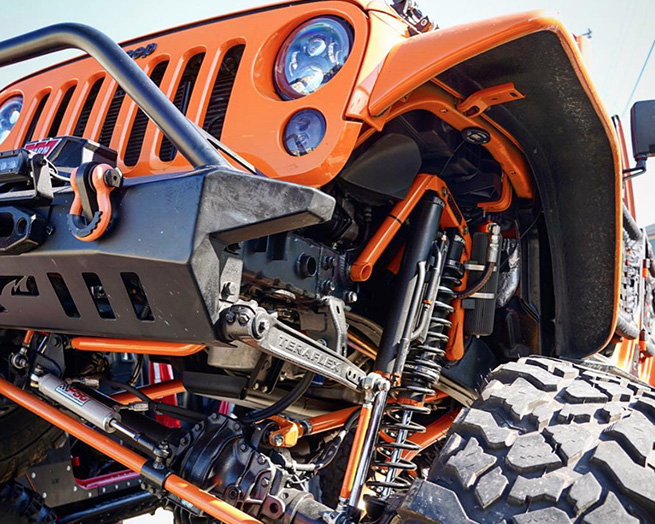A Jeep sway bar (sometimes called an anti-roll bar or anti-sway bar) is a crucial part on the vehicle’s suspension that helps eliminate sway – or more precisely helps prevent leaning (rolling) from one side to the other.
When the Jeep begins to lean, the sway bar applies force to the suspension on either side in order to resist that leaning – upward on one side and downward on the other. If the bar becomes damaged or broken, this body roll could potentially cause driving or safety issues. However, when the Jeep is taken off-road, the sway bar actually prevents full wheel articulation and suspension travel which can impair your ability to successfully conquer an obstacle.
So, many enthusiasts swap their standard sway bar links out for sway bar disconnects. These can be detached before heading off-road, which frees up the sway bar and allows full wheel travel and enhanced off-road performance.
What are the pros and cons?

Factory Sway Bars – are extremely stiff, and are designed primarily to prevent body roll by limiting suspension flex, which is directly contrary to off-road traction and performance.
Sway Bar Disconnects – completely eliminate all sway bar control causing the vehicle to exhibit excessive body roll in rough or uneven terrain, which unbalances the vehicle and reduces traction.
Torsion Sway Bar (Antirock) – manual sway bar disconnects can be a very difficult to operate if the vehicle is not sitting on flat and level ground. AntiRock (torsion bar) sway bars eliminate this issue completely as they remain connected at all times, making the transition from on-road to off-road hassle free and enjoyable.

For the record, I stole some of this from @quadratec and @currieenterprises!